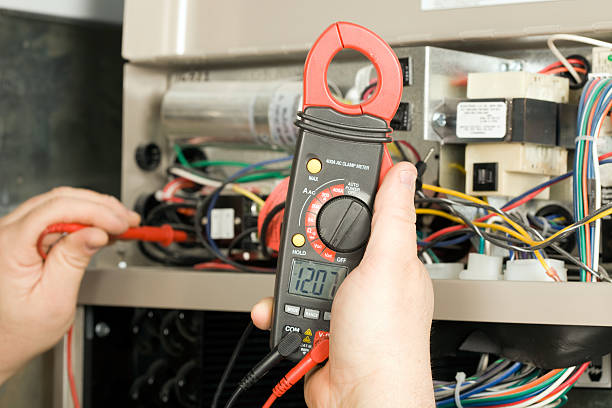Your furnace is essential for keeping your home warm, but a leak can cause worry. Water pooling around your furnace signals a problem that needs attention. Ignoring it may lead to bigger issues. For professional furnace repair, call (817) 508 6133 to get expert help fast. This guide explains why leaks happen and how to fix them.
Common Causes of Furnace Leaking Water
Furnace leaks often stem from specific issues within the system. Understanding these causes helps you identify the problem quickly. Below, we explore the most common reasons for water leakage.
Condensation Issues in High-Efficiency Furnaces
High-efficiency furnaces produce condensation as they operate. This water usually drains through a condensate line. However, a clogged or damaged line can cause water to back up and leak. Regular maintenance prevents this issue. Checking the condensate drain ensures proper function.
Blocked Drain Lines
A blocked condensate drain is a frequent culprit. Dust, dirt, or algae can clog the line, stopping water from draining. This leads to overflow and leakage. Flushing the drain line with a vinegar solution often clears minor blockages. If the problem persists, professional help is needed.
Faulty Condensate Pump
Some furnaces use a condensate pump to move water to a drain. If the pump fails, water accumulates and leaks. Signs of a faulty pump include strange noises or no water movement. Replacing or repairing the pump resolves this issue. Always ensure the pump is properly maintained.

Steps to Stop Furnace Leaking Water
Addressing a furnace leak requires careful steps. Acting quickly prevents damage to your furnace and home. Here are practical solutions to stop the leak.
Inspect and Clean the Condensate Drain
Start by checking the condensate drain for blockages. Turn off the furnace for safety. Locate the drain line, usually a PVC pipe near the unit. Use a wet/dry vacuum to clear debris. If the clog remains, contact a technician for furnace repair.
Check the Condensate Pump
If your furnace has a condensate pump, ensure it’s working. Listen for unusual sounds or check if water is pooling. A broken pump may need replacement. Regular cleaning keeps the pump in good condition. This step reduces the risk of leaks.
Examine the Humidifier Connection
Some furnaces connect to a humidifier, which can leak if not installed correctly. Check for loose connections or cracks in the humidifier. Tightening fittings or replacing damaged parts stops the leak. Regular humidifier maintenance is key to avoiding issues.
Preventive Measures for Furnace Maintenance
Preventing leaks saves time and effort. Simple maintenance tasks keep your furnace running smoothly. Here are three effective tips:
-
Schedule Annual Inspections: A professional technician can spot potential issues early.
-
Clean Drain Lines Regularly: Flushing the condensate line prevents clogs.
-
Monitor the Condensate Pump: Check for wear and tear to avoid pump failure.
Taking these steps ensures your furnace stays leak-free. Consistent care extends the system’s lifespan.
When to Call a Professional for Furnace Repair
Some furnace issues are too complex for DIY fixes. Persistent leaks, unusual noises, or system malfunctions require expert attention. A licensed technician can diagnose and resolve problems safely. Delaying professional help may worsen the damage. For reliable service, call (817) 508 6133 to schedule a furnace repair appointment.
Signs You Need Immediate Help
Certain signs indicate urgent furnace issues. Water pooling around the unit, strange smells, or reduced heating performance are red flags. Addressing these promptly prevents costly repairs. A professional can assess and fix the problem efficiently. read about ac installation
Benefits of Professional Service
Hiring a technician offers peace of mind. Experts have the tools and knowledge to handle complex furnace repair tasks. They ensure safety and compliance with regulations. Professional service also improves your furnace’s efficiency.

Conclusion
A leaking furnace is a serious issue, but it’s manageable with the right approach. Identifying the cause, such as a clogged drain or faulty pump, is the first step. Simple maintenance tasks like cleaning the drain line can prevent leaks. For complex problems, professional furnace repair is essential. Call (817) 508 6133 for expert assistance to keep your furnace in top shape. Regular care ensures your home stays warm and safe.
FAQs
Why is my furnace leaking water?
A furnace may leak due to a clogged condensate drain, a faulty pump, or humidifier issues. High-efficiency furnaces produce condensation, which can overflow if not drained properly. Regular maintenance prevents these problems.
Can I fix a furnace leak myself?
Minor issues like a clogged drain can be fixed with a vinegar flush or vacuum. However, complex problems like a broken pump require professional help. Always turn off the furnace before attempting repairs.
How often should I maintain my furnace?
Annual maintenance is recommended to keep your furnace running smoothly. Cleaning drain lines and checking the pump regularly prevents leaks. A professional inspection ensures all parts are in good condition.